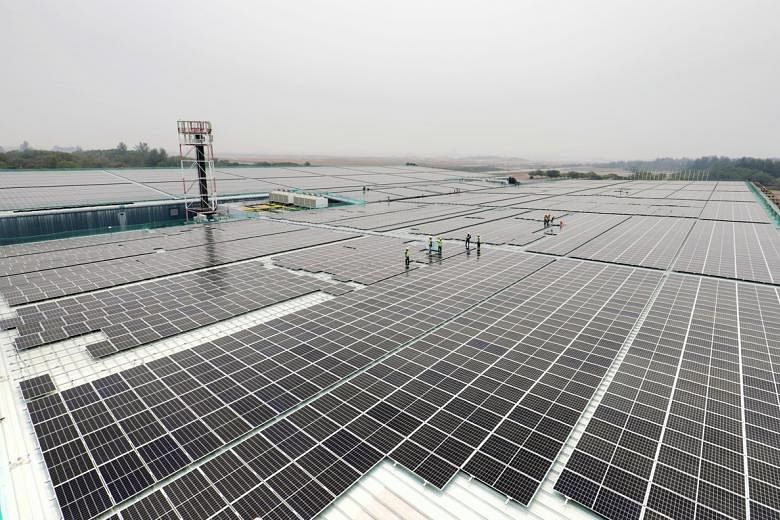SINGAPORE - The country's campaign to squeeze value out of waste substances has taken another step forward with the signing of a deal that will foster efforts to build a low-carbon economy.
The agreement inked on Thursday (July 2) between four local companies aims to develop a carbon capture, utilisation and sequestration (CCUS) system.
These systems essentially work by sucking planet-warming carbon dioxide out of the air so that it can be stored underground or used to create other products, such as concrete or fuel.
Professor Low Teck Seng, chief executive of the National Research Foundation (NRF), said investing in low-carbon research and development to drive cost-effective solutions is crucial for Singapore to develop a low-emission economy.
"While Singapore, like the world, is still dependent on fossil fuels for our energy needs, technologies that enable efficient CCUS would help mitigate our emissions greatly," he added.
"CCUS also presents opportunities for converting carbon dioxide into novel chemicals, materials and fuels, offering potential in growing new industries."
The agreement involves Keppel Data Centres, Chevron, Pan-United and Surbana Jurong jointly developing "mature carbon capture technologies, coupled with novel technologies that utilise cryogens, membranes and hydrogen".
The firms will also collaborate with other research partners, including universities and international organisations, to advance the development of CCUS technologies, added the joint statement from the NRF and the companies.
When commercially viable, CCUS technologies are expected to help Singapore achieve its climate goal of halving emissions from its 2030 peak by the year 2050 and achieving net zero emissions as soon as viable in the second half of the century.
These technologies have been the subject of growing research interest worldwide as a way of combating climate change.
Human activities, such as deforestation and the burning of fossil fuels for energy, are causing the emissions of planet-warming greenhouse gases.
The world has already warmed about 1 deg C since pre-industrial times.
While scientists and activists are urging governments to do more to reduce emissions, more attention is being paid to accelerate the development of CCUS as a way to prevent greenhouse gases from accumulating in the atmosphere like an ever-thickening blanket.
There are only two large-scale CCUS power projects in operation, noted the International Energy Agency website, although more are in the pipeline.
Two coal-fired power plants - one in Alberta, Canada, and the other in Texas - have been fitted with CCUS technologies.
The carbon dioxide captured by the Petra Nova system in Texas is used in enhanced oil recovery at nearby oil fields. This involves injecting the carbon dioxide into oil reservoirs to increase the ability of oil to flow to a well.
The CCUS agreement follows other ground-breaking initiatives here to extract value out of waste.
Newater treats used water and Newsand is a construction material made from incineration bottom ash, while Newoil is extracted in the process of recycling plastics and could be a potential replacement for petroleum.

